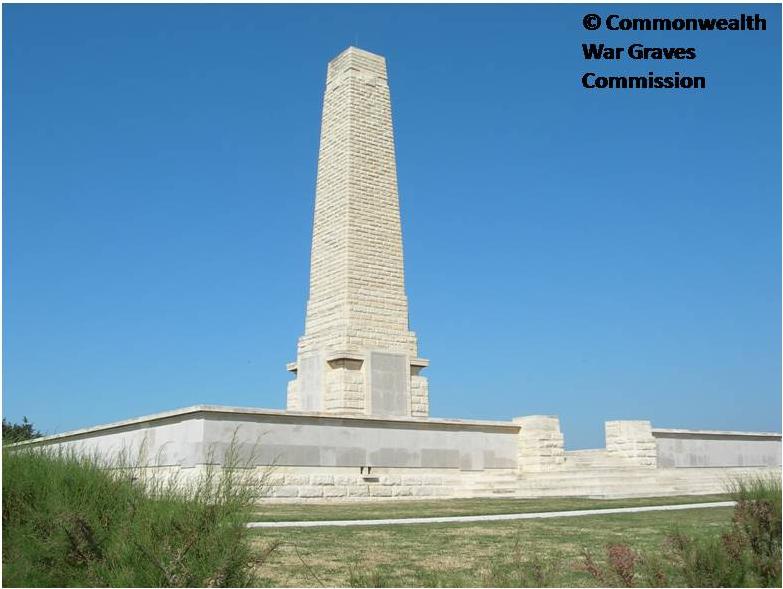THE VILLAGERS OF COLLINGHAM AND LINTON WHO SERVED IN WORLD WAR ONE
COLLINGHAMANDDISTRICTWARARCHIVE.INFO
 CONTACT
CONTACT




Rank Private
Service Number 15002
Service Army
Battalion 9th Battalion
Regiment West Yorkshire Regiment
Killed in Action: 7th August 1915
Commemorated at: Helles Memorial, Turkey
Trade or Occupation pre-war: Farm labourer
Marital status: Single
* Taken from attestation papers or 1911 census
** Marital status on enlistment or at start of war
- Born in Collingham, Linton or Micklethwaite
- Named on war village memorials or Roll of Honour
- Named on printed lists of villagers in The Wetherby News or Collingham Parish Magazine
Biography
Family background
William Henry Johnson (sometimes William Herbert Johnson) was born on the 13th June 1895 in Collingham, the son of Henry and Sarah Ann Johnson. William was baptised in Collingham Church on 11th August 1895. Henry and Sarah had about 13 children and six of these served during World War 1 - Albert (Navy), Walter (Bantams), Raymond, William, Alfred and David. The Johnson boys were some of the first from the village to enlist and serve.
Service record
William Henry Johnson enlisted in Wetherby early in the war and joined the 9th Battalion West Yorkshire Regiment. This battalion was formed of many men from West Yorkshire and a large number of local men enlisted into this unit which formed part of the 11th Northern Division. Late August 1914 this Division began to assemble around Grantham and by 21st Septmeber 1914 the strength of the Division had reached 13,000 officers and men. At first the infantry of the 11th Division consisted entirely of north country battalions; later on, however, when the 6/East Yorkshire became the pioneer battalion its place was taken by a Wessex battalion – 5/Dorsetshire Battalion.
At first there was the usual shortage of clothing, equipment, and arms, leading to some discomfort and to considerable delay in training for war. Nevertheless, on the 18th October Field Marshall Earl Kitchener visited Grantham and inspected the infantry in Belton Park. Until the following April (1915) the Division remained scattered: infantry at Grantham, artillery at Leeds, Sheffield, Norwich and Weedon; engineers at Newark; field ambulances at Sheffield; train at Lichfield. Then on the 4th April 1915 the 11th Division began to move to its concentration area at Witley and Frensham, and final training was carried out and divisional operations undertaken.
On the 31st May 1915, H.M. the King inspected the 11th Division on Hankey Common, and on the 12th June orders were received that the Division was to be ready to leave at short notice for the Dardanelles. On the 30th June 1915 embarkation began at Liverpool, and the bulk of the Division sailed in the Aquitania and the Empress of Britain. On the 10th July the Aquitania with divisional headquarters and the 32nd Infantry Brigade reached Mudros. On the 23rd all headquarters and troops at Mudros left Lemnos and moved to Imbros, and the 11th Division completed concentration at Imbros on the 28th July.
The Dardanelles Campaign was conceived late in 1914 as a means to attack Constantinople and hence protect Egypt and the Suez Canal by effectively taking Turkey out of the war. At first the Navy tried to force their way through the narrows , but when this failed plans were made for British, Australian and New Zealand troops to make a series of landing on the Gallipoli peninsula while a French force would take part of the mainland. The Anzacs established themselves at Anzac cove, a steep cliff enclosed area with a gorge at the back and covered by scrub where progress inland was difficult in April 1915. The British, at the tip of the peninsula at Helles made more progress but suffered appalling casualties and were effectively pinned down in a series of trenches. Thus in August 1915 a new series of landings were planned for Suvla Bay. This area was thought to be poorly defended and it was hoped that these troops could link up with the Anzacs and break through towards Constantinople. The 9th Bn West Yorkshire Regiment was part the force earmarked for this action - the Suvla landings. Their orders were to land at the north end of B Beach and to seize Lala Baba. After that they were to press on via the Cut to Hill 10, followed by the other battalions of the brigade. On reaching Hill 10 the whole brigade was to come under Br.-Gen Sitwell’s orders to support an attack on the Chocolate Hills. The whole attack depended on surprise and the gaining of high ground around Suvla Plain before the Turks could bring reinforcements to the region. Unfortunately due to unclear, and rushed planning the men, who were the first of the volunteer army to go into action, and were therefore relatively inexperienced, were not well briefed as to their objectives.
During the attacks, William Herbert Johnson was Killed in Action on the 7th August 1915.
The Wetherby News of 10th September 1915, under the heading "COLLINGHAM SOLDIER KILLED: One of four brothers serving -
One sees his death" reported William's death:
"Mr Henry Johnson of 3 Elmwood Terrace Collingham, on Saturday received an official intimation to the effect that his son
Private William Henry Johnson of the 9th West Yorkshire regiment (Leeds Bantams) has been killed in the fighting on the Gallipoli
Peninsula in August. Deceased, who was only 20 years of age was the youngest but one of four brothers serving in the army,
and a pathetic feature of his death is the fact that his younger brother David took part in the same action and saw him fall,
David having written to this effect. Prior to the war the deceased lad was in the employ of Mrs Cass, farmer, of Little Ribston."
William's service number (15002) was next to his brother's number (David Johnson (15003)) and another Collingham man, Allen Wilson (15004) who was also killed in the fighting in Gallipoli.
William's body was not recovered after the battles and he is commemorated on the Helles Memorial, Gallipoli.
William's brother, Raymond Johnson, was also killed in the Great War
A number of articles in the Wetherby News of the time give accounts of the local soldiers' experiences in Gallipoli. View those reports here
Biography last updated 21 January 2020 23:26:13.
Sources
1911 Census. The National Archives. Class RG14 Piece 25948
The Wetherby News 18/9/1914
The Collingham Parish Magazine Dec 1914 & Feb 1915
First World War Medal Index Cards. The National Archives (WO372).
First World War Medal Index Rolls. The National Archives (WO329).
Commonwealth War Graves Commission Cemetery and Burial Reports
Pension Record Cards and Ledgers. Case number 4/D/1998
If you have any photographs or further details about this person we would be pleased to hear from you. Please contact us via: alan.berry@collinghamanddistrictwararchive.info